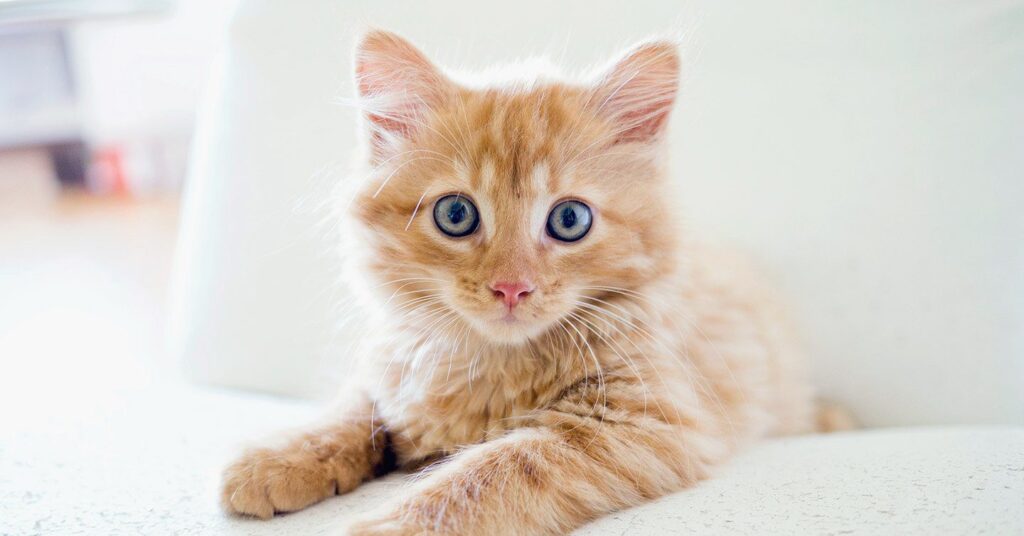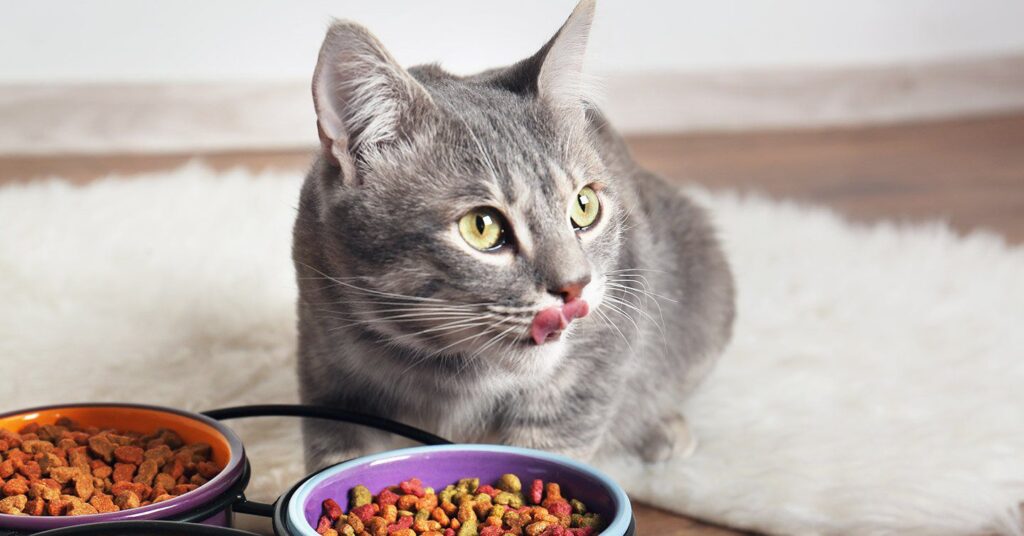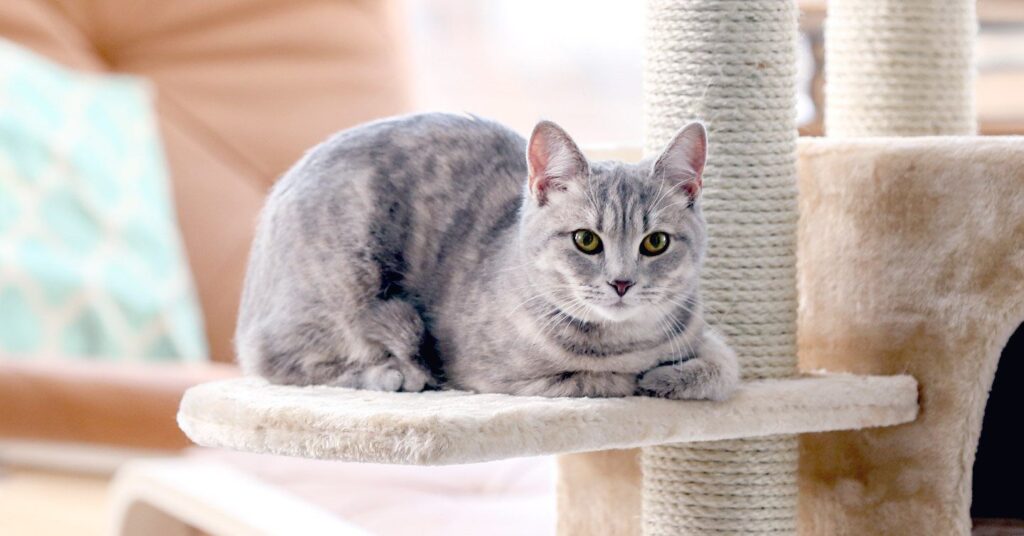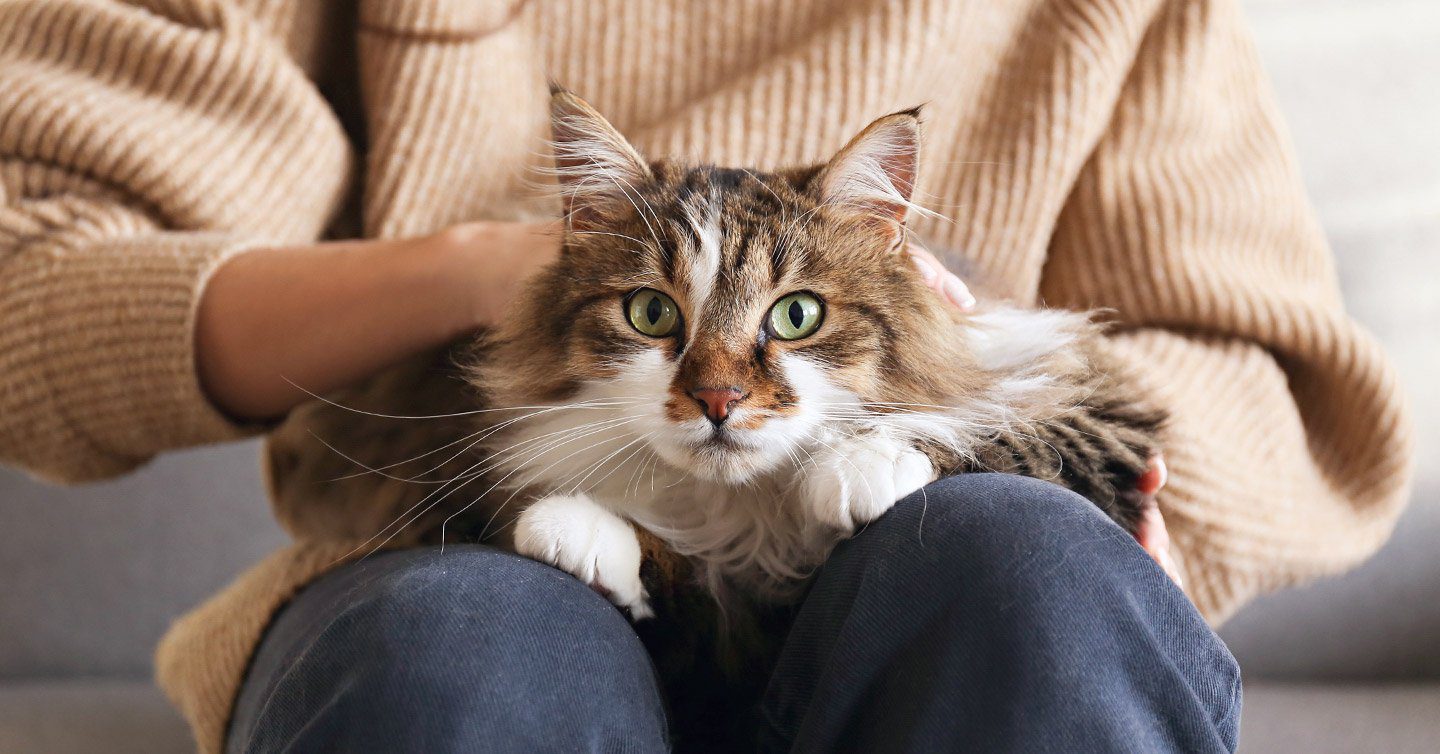Your heart is telling you to get a cat.
Maybe you love how your friend’s cat purrs contentedly while you stroke their soft fur?
Maybe after watching so many cute kitty videos on Youtube, you got the feels, and now want a cat to amuse you with their antics?
Spring and summer mean rescues and shelters flood social media with adorable kittens needing homes. Lonely, sad-looking adult cats implore you through the camera lens to rescue them from the cage they now call home. There are 94 million pet cats in the US. That means 34% of American households have a cat as a family member.
Sadly, each year 6.5 million pets will enter shelters, and 3.2 million of those are cats. We wish we could save all of them, but saving even one cat in need has an impact on these statistics.
Are you ready to handle sharing your home with a cat? We sure hope so! But there’s more to know about living with cats…
“No amount of time can erase the memory of a good cat, and no amount of masking tape can ever totally remove his fur from your couch.”
Leo Dworken
Ask yourself the following questions to make sure your ultimate decision is what’s best for both you and a cat in need:
Is a cat what you’re looking for?

Are you looking for constant companionship and affection from a kitty? Cats are affectionate, but they like making the rules. They will wind themselves through your legs and meow for attention, but prefer relationships on their own terms.
If an attentive companion is what you’re looking for, a cat will not be as attentive as a dog.
Cats are not as high maintenance as dogs and don’t mind being alone during the day. They don’t have to go out to potty (litter box!) and they don’t require outdoor exercise. They are less dependent, so they can occupy themselves just fine when you need them to.
Are you ready to make a long-term commitment?

Getting a cat means you’re accepting responsibility for their well-being and care for the rest of their lives. For a kitten, that can mean 15 years (the average lifespan of an indoor cat). That said, some cat breeds can have average life spans up to 20 years!
If you’re not ready to make a long-term commitment, consider alternatives like “cat sitting” for traveling friends or fostering until you’re ready.
Are you financially ready to take care of a cat?

People think cats are less expensive than dogs, and that’s partially true. They don’t require grooming appointments (they do it themselves) or dog walkers. But don’t underestimate the cost of sharing your life with a cat because they also have basic needs that must be met.
Quality foods, regular veterinary care, vaccinations, spay or neutering, along with toys, beds, and the litter box can all add up over the course of a year. The average cost of owning a cat for one year can be from $500-$1400. If they have underlying health problems or get an illness or injury, it can quickly go higher.
Let’s look at some costs to consider if you want a cat:
Initial costs:
- Adoption or homing fees: Depending on where you get your kitty, adoption or homing fees can vary significantly from free to hundreds of dollars. The good news is many shelters reduce or waive their adoption fees during the spring and summer to find quality homes for all the kittens and cats in need.
- Veterinary Exam: Whether you get an adult cat or a kitten, there should always be a vet exam to confirm health, check for parasites, and to administer vaccines. The exam and vaccinations can run $100 – $200. Many shelters will offer discount coupons for these services, making them more affordable.
- Spaying or Neutering: This can cost up to $145. Many shelters and rescues will spay or neuter your kitten or cat prior to adoption, or will offer discount coupons. There are also low-cost clinics in most cities.
- Food: They say “what you put in, you get out,” meaning the lower in quality the food, the higher the aroma and amount of poop. If you are planning on an indoor-only cat (indoor cats have longer life expectancies), high-quality food or treats are a wise choice. This can cost as high as $60 per month.
- Litter box and litter: Litter comes in many forms and fragrances (pellet, clumping, clay, or sustainable sources). The cost is typically $5.00 for a 5 lb bag of clay litter (.50/lb) up to $18.75/lb ($3.75/lb) for the same size bag of an eco-friendly litter. Litter boxes come in all shapes and sizes too. There are regular, plastic box types (covered and uncovered), to boxes that double as furniture for aesthetic purposes. What you choose for your home can cost anywhere from $15 to $100+ if you choose the furniture options.
- Water bowls: These are variable in cost also. You can use a household glass bowl, or go for a cat fountain. Cats love to drink from moving water, but they can run around $25-$70.
- Treats and Toys: Cats can be easy to amuse, especially kittens. They enjoy odd things like paper grocery bags (be sure to take off any handles), or even a small cardboard box they can try to curl up in. It may take a bit of time to find out what play preferences your cat has, but toys can be as simple as a catnip mouse (kittens under 6 months may not react to the catnip), to jumping and chasing toys like the fishing pole toys that sport fluttering feathers like a bird. Cats really love those! Toys are not a large initial expense, and you’ll have fun figuring out what your cat prefers. The same can be said for treats (not all cats like them). Expect to spend about $25 on toys and treats depending on what interests your cat.
- Scratching post or tree: Cats flex their toes and manage the health of their claws. Unfortunately, without an appropriate outlet, this can mean scratching on your favorite chair or sofa. Cat trees and scratchers can cost anywhere from $15 for the cardboard box type scratchers to $100+ for the larger furniture like scratchers and trees. Cats use scratching posts and cat trees not only to sharpen their claws but to leave their scents on their territory too. Keeping the tree where you spend the most time will encourage your cat to use it. You can also try spraying it with catnip or lavender to train your cat that it’s an acceptable place to exercise those toes.
- Kitty Crate: Having a crate will make any transporting safer and calmer for your kitty. Crates can cost around $25.
Ongoing costs of cats per year:
- Food: Depending on the quality of the food you choose for your cat, the cost for a year could be $720.
- Litter: depending on the type of litter you choose, the costs could run $60/yr for clay litter, up to $225 for an eco-friendly litter.
- Veterinary care: This includes annual wellness exams, yearly vaccinations and lab tests, such as a fecal test for intestinal parasites. Expect to pay around $100-$200 per year, or even more if illnesses or injuries crop up. For this reason, a cat health insurance & preventive care plan is a brilliant way to manage both routine wellness costs and unexpected vet bills.
- Parasite Prevention: Fleas, ticks, heartworms, intestinal parasites, and ear mites are common threats to cats indoors and out. Preventing or controlling them can run $50-$100 per year for the preventative medications.
- Toys and treats: Depending on your cat’s play and treat preferences, you can spend around $300 per year.
Are you willing to provide quality care for your cat? If funds are tight, consider saving up for your perfect kitty.
Do you have enough space for a cat?

Cats are all about territory. In the wild, they roamed for miles. But don’t let that discourage you! If you have a compact living space, it’s easy to provide lots of unique areas to keep your cat satisfied and busy. And research proves that indoor cats may live longer lives than cats allowed to go outside.
Think about ways you could make your living space more comfortable for a cat.
- Are there areas they can get up high?
- Are there areas they can hide in and sleep?
- Can they lounge on a windowsill and watch the birds (kitty tv)?
- Can you secure an apartment balcony with netting or wire so your cat can enjoy himself outside? (make sure this is okay with your landlord first!)
- Are you willing to place small water dishes or leave treats around in your living space so your cat can hunt for them?
There are loads of resources online with creative ideas to build your cat a kitty oasis. A happy, well-adjusted cat reduces destructive behaviors.
If you lack space, but can adapt to the social and environmental needs of a cat, this may be the right time for a meowing friend. You’ll have a fun time figuring out what interests your kitty. If not, perhaps now is not the right time for a cat.
Adult cat or kitten? What suits your lifestyle?
Think about the reasons you want a cat. Do you want a docile cat that will sit with you and purr contentedly, or do you want a lively amusement machine that will keep you busy? Your answer will help you decide whether a kitten or an adult cat is the best choice for you.
Kittens are adorable with hilarious antics and boundless energy. This makes them very appealing but can require a lot of patience. They can easily get into trouble if not carefully watched. Their immune systems are weaker than adult cats, making them more vulnerable to certain illnesses and infections – so vaccinations and parasite management are extra important! Young kittens are tiny and can be injured easily. If you have small children or other pets not familiar with cats, an introduction prior to the adoption will help ensure everyone can get along and be safe.
Adult cats are an excellent option if there are small children or other pets in your household. Adult cat personalities have developed, so you can tell if your cat is aloof or affectionate. You’ll also find out if they’re comfortable around children or other pets. Pre-adoption meetings are advised for the same reasons as for kittens. The downside of adopting an adult cat is not always knowing their history. This includes both socialization and health history. With adult cats, it can take some time for them to settle in, so patience is necessary.
Will a cat fit into your future?
Do you move frequently? Moving is one of the primary reasons cats are surrendered to shelters. Be willing to commit to including your cat in your move and plan for boarding or shipping fees and pet deposits.
Are you college-bound, starting, or changing your career? Cats are more social than people assume, and a lonely or bored cat can become badly behaved. If you’re not sure how much time you can devote to a purring companion, now may not be the right time to add a cat to your family.
Now that you know all this, is it time for a cat?
By now you’ve considered all the reasons you want a cat, and all that it would mean and cost. We hope the time is right for you and you adopt or rescue a cat in need! But, if this is not the right time, we’re happy you came to that conclusion before you brought a new kitty home. If you do end up welcoming a new furry family member into your home soon, Pumpkin is here to help you provide the care they need to live their best – and craziest – cat life (or nine).




